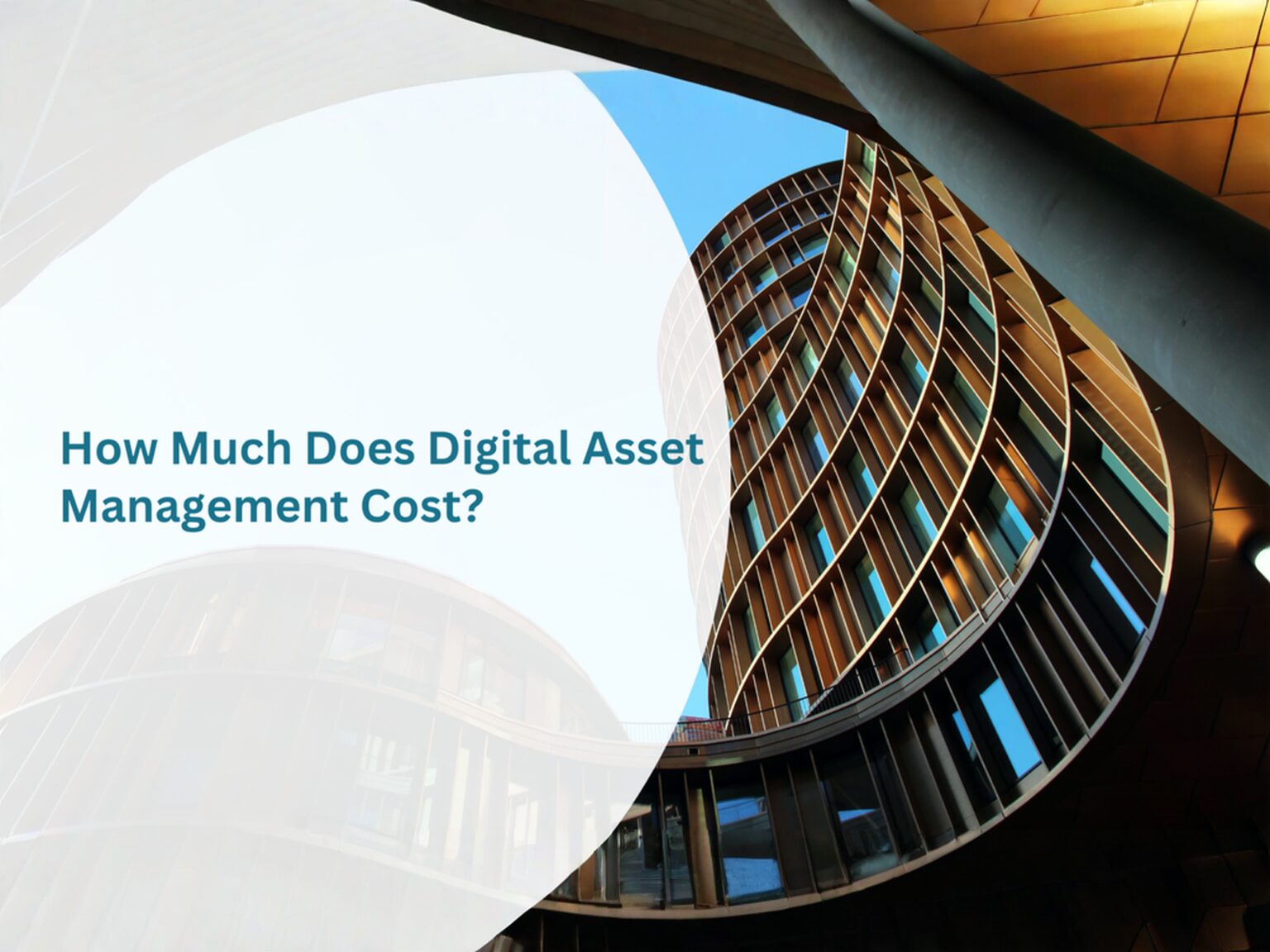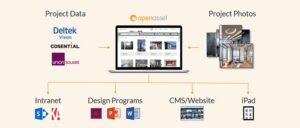DAM Pricing Guide: How Much Does Digital Asset Management Cost?
Jun 11, 2025

So, you’ve decided a digital asset management (DAM) system is the right move to organize your team’s files and branded assets. Now comes the big question: what’s it actually going to cost?
At OpenAsset, we’ve worked with hundreds of AEC teams to clean up messy file systems and streamline asset sharing. Along the way, we’ve seen exactly what affects DAM pricing, from storage and users to onboarding and hidden fees.
In this guide, we’ll break down what drives digital asset management pricing up (or keeps them down), what hidden charges to watch for, and what to ask when comparing vendors. We’ll also walk through the ROI you can expect and how to ensure the investment pays off.
What factors make a DAM more expensive?
To begin, look at what is arguably your biggest concern: the factors that can cause your total price to increase.
Expanded Users & Permission Levels
One of the biggest DAM cost drivers? Users—and how much access they need.
The more people you add to your system, the higher your price tag. That’s because every user typically comes with onboarding, support, and a seat in your subscription. It’s the same model used by tools like Canva, Microsoft, and Miro—more users mean more resources.
But it’s not just about how many people you add—it’s also about what they can do. If certain team members need extra permissions (like editing or deleting assets), those roles often cost more. Some platforms charge a premium for “power users” or admins.
At OpenAsset, a basic user license runs around $200 per year, and we keep our pricing transparent so you know exactly what you’re getting.
Large Onboarding Class Size
Another factor that can drive up digital asset management pricing is the size of your onboarding class. If numerous employees need onboarding, you may need to pay extra for training materials or dedicated support during the onboarding process.
Onboarding a few smaller groups of users over time and providing internal training from these experts can reduce this expense.
Extensive Cloud Storage
The cloud storage you need can also impact the total DAM cost. Many providers charge based on the amount of storage you use, and if you have a large library of high-resolution assets, you may need to anticipate paying a higher fee for additional storage space.
Additionally, if you need to store assets for a long period, you may need to pay extra for archival storage or other long-term storage solutions.
Enterprise Subscriptions
Finally, if you’re a large enterprise with complex needs, you may need to invest in an enterprise-level subscription, which can be significantly more expensive than a basic subscription.
Enterprise subscriptions often include additional features, capabilities, and support, but also a higher price tag.
What factors make a DAM less expensive?
Once you’ve accounted for potential line items that increase digital asset management pricing, you can look into the following areas to lower the price. However, it’s important to remember that less is not always more, and some providers do not offer a “middle ground” for their features.
Basic Users & Permissions
On the other hand, if you have a small team or only need to grant basic permissions, you may save money on a DAM solution.
Many providers offer tiered pricing plans based on the number of users and level of permissions, so if you don’t need extensive permissions or advanced features, you may find a more affordable plan.
Small Onboarding Class Size
Similarly, if you have a small team or don’t require on-site training or dedicated support during the onboarding process, you may be able to save money on your DAM solution.
Many providers offer self-service onboarding materials and support, which can be more cost-effective than hiring a dedicated trainer or support team.
Minimal to Average Cloud Storage Needed
If you have a small library of assets or don’t require high-resolution storage, you may be able to save money on your DAM solution by choosing a lower-tiered plan that includes less cloud storage.
Many providers offer tiered pricing based on the amount of storage you need, so if you can get by with less storage, you may find a more affordable plan.
Types of Digital Asset Management Pricing Structures
Choosing the right DAM starts with understanding how different pricing models work. Some are predictable. Others scale with your usage. Knowing the difference helps you stay on budget and avoid surprises later.
Usage-Based Pricing
With usage-based pricing, the price depends on how much you use, like users, storage, or even bandwidth.
This setup works well for growing teams or seasonal workloads, since it flexes with demand. But costs can spike if you’re not tracking usage closely.
Good fit for:
- Firms scaling fast
- Teams with fluctuating project loads
- Organizations with solid usage forecasting
Keep in mind:
- Your bill can change month to month
- Storage and “seat” overages can add up quickly
Fixed Pricing
Fixed pricing gives you a flat monthly or annual cost based on your chosen tier. The tier includes a set number of users, storage capacity, and features.
It’s predictable, which makes it easier to plan. You know what’s included—and what’s not.
Good fit for:
- Teams with consistent needs
- Organizations working with strict budgets
- Stakeholders who prefer cost certainty
Keep in mind:
- You may pay for features or seats you don’t use
- Going beyond your tier could require an upgrade
Tiered and Custom Pricing
Many DAM vendors offer tiered plans—Starter, Pro, Enterprise—that bundle features, storage, and support levels. Some go a step further with custom pricing based on your specific needs.
If you need advanced integrations, API access, or onboarding for multiple departments, this model gives you flexibility.
Good fit for:
- Multi-office or global teams
- Companies with specific compliance or security requirements
- Firms looking for a tailored onboarding or support experience
Keep in mind:
- Custom pricing can be opaque—ask detailed questions
- Long sales cycles may slow down onboarding
Potential Hidden Fees
When you’re pricing out a DAM, remember: the quote you get up front usually covers the basics, but not always the full picture.
That’s not always because vendors are sneaky (though it’s worth keeping an eye out for). It’s hard to account for everything before you’re fully up and running. Maybe you need to add more users than expected. Maybe another team jumps on board and pushes you over your storage limit. That’s when surprise fees can creep in.
That’s why it’s smart to dig into the fine print early. Look for any hidden or “nice-to-have” costs that could sneak into your invoice down the road. It’ll save you budget headaches later.
Cloud Data Charges
One hidden fee to watch out for is cloud data charges. Some providers may charge additional fees for data transfer, storage, or egress (cost of retrieving data), which can quickly add up if you have a large library or even if you accidentally exceed your allotted storage amount in a given month.
For example, at OpenAsset, clients can expect to pay 1.40 USD per GB per month for the first 100GB used. As additional data is added, the total digital asset management pricing of data becomes even more affordable.
“Super Users” or Expanded Permissions
Some DAM providers may charge extra fees for “super users” or expanded permissions beyond basic access.
For larger teams or teams that plan to integrate multiple teams onto the tool, this is an important cost to consider. Discuss what is and is not included in the different permissions options with your DAM provider so you know the fees associated with different users.
At OpenAsset, we offer both basic and full user subscriptions. Basic users are typically one-third of the cost of full user subscriptions due to their administrative permissions that allow expanded editing.
To determine which of your team members could benefit from a basic vs. a full license, check out our full vs. basic license explanation.
Gradual Digital Asset Management Pricing Increases
Some DAM providers may offer a low introductory rate for the first year but increase the price gradually each year.
As a seasoned DAM provider, potential customers often bring us competing quotes from competitors.
Unfortunately, a major hidden line item in these contracts is the provider’s ability to increase rates after the introductory service year. When reviewing quotes from a provider that’s newer in the DAM space, be sure to consider the potential for price hikes after your renewal date.
Total Cost of Ownership
Now that you know total cost factors, let’s see what a calculation would look like for different-sized organizations.
In our experience, a small firm with ten users and one or two enterprise subscriptions is looking at a range of 10k to 18k annually, depending on the DAM provider.
In comparison, a medium-sized firm with similar specifications should anticipate paying between 15k to 24k annually, and a large enterprise might expect to pay between 30k to 50k.
It’s also important to remember that these ranges cannot account for potential fees or overage charges that some DAM providers charge, but they can hopefully provide a baseline for budgeting exercises and future planning.
What is the ROI of a DAM?
Building a DAM business case is a thoughtful process, and often the decision includes cost, but to truly determine the total cost, you also need to know if your DAM could actually save you money. This is why we’re transparent about sharing how an effective DAM should increase your organization’s ROI.
Streamline Processes
A DAM solution can streamline your file-sharing process and make it easier for team members to access files. This can save time and reduce errors, ultimately leading to increased productivity.
We’ve consistently heard that teams create proposals in under an hour, whereas previously it took them more than four hours. When you magnify that time savings over multiple employees and years, it’s easy to see how a DAM can speed up processes and reduce associated labor costs.
Accelerate Time to Market
With a DAM solution, you can quickly find and access the assets you need to create marketing materials or launch campaigns, which can help you get to market faster and stay ahead of the competition.
Especially in the AEC industries, being faster and more efficient than your competitors is imperative for winning more work.
Proposal Creation Rate & Time Saved
DAM solutions can also speed up the creation of proposals and presentations by providing easy access to all necessary assets. Some providers even offer asset templates, which are invaluable in expediting resumes and one-pagers; content your team will consistently create.
Tools That Talk To One Another
With a DAM solution, you should select a platform that integrates with the tools you already have to enhance the total impact of that solution. For example, OpenAsset has specific integrations that plug into AEC professionals’ most-coveted technology.
By partnering with Procore, Adobe, Microsoft, WordPress, and more, we create an even easier transition across systems, less friction, and a more complete implementation.
These robust integrations prevent your team from spending even more on additional software when a DAM provider does not integrate. As you advance in your decision-making, ask about any essential integrations for your team’s daily tasks.
Now you know the components of asset management that make up DAM ROI, but how much can your organization really save? Check out our free ROI Calculator for tangible numbers you can show your team.
Questions to Ask a DAM Provider
Once you understand what goes into DAM pricing, the next step is getting real answers from the vendors you’re evaluating.
Use these questions to guide the conversation and get a more accurate sense of what you’ll pay:
- What do teams typically spend? Ask for a ballpark range. This helps you gut-check if the platform fits your budget before diving deeper.
- How much cloud storage is included? Understand the average storage offered at each tier—and how your current library compares.
- How many users are included in a team plan? Some tools are priced per user, others bundle a few together. Make sure the plan fits your team’s size and structure.
- What happens if we go over our storage limit? Overages happen. Ask what the fees look like so you’re not caught off guard.
- Is onboarding included for every user? Some platforms only offer onboarding for admins or charge extra per seat. Make sure you know what your team will actually get.
- Are integrations included or billed separately? If your DAM needs to connect with tools like InDesign or WordPress, ask what’s included—and what costs extra.
- How is your subscription structured—monthly, yearly, or something else? This affects not just your budget but also your flexibility. Some plans may lock you in longer than others.
- Can you share an example of typical pricing for a company like ours? Vendors should be able to give a rough estimate. For example, a 100-person company with 10 users and a few integrations might expect to pay around $12,000–$18,000 per year with OpenAsset, plus cloud storage fees.
Tips for Choosing the Right DAM Pricing Model
If you’re comparing DAM vendors, it’s easy to get distracted by flashy features or low intro rates. But the real key to making the right call? Finding a pricing model that matches your workflow, team structure, and long-term goals.
Here are a few things to keep in mind:
- Start with your must-haves. Know what your team needs to function day-to-day—users, storage, integrations—then work from there.
- Think long term. Look beyond year one. Will the platform grow with you? Are price increases built into the contract?
- Ask for real examples. A good vendor should give you ballpark pricing based on companies like yours.
- Watch for hidden costs. Look closely at onboarding, storage overages, and premium user fees.
- Don’t overpay for underused features. If your team doesn’t need advanced permissions or unlimited storage right away, choose a model that lets you scale gradually.
DAM Pricing FAQs
How are digital assets priced?
Most DAM platforms price digital assets based on factors like storage volume, number of users, and access permissions. The more assets you store—or the more people managing them—the more you’re likely to pay.
How much is software asset management?
Software asset management (SAM) platforms vary widely in price, often ranging from hundreds to thousands of dollars per month, depending on the scale and complexity of the organization. While SAM tools focus on tracking software licenses and compliance, DAM solutions center on storing and organizing branded visual content.
How much do digital asset management systems cost?
Digital asset management pricing depends on team size, storage needs, and features. Small teams might spend $10K–$18K annually. Mid-sized firms usually fall in the $15K–$24K range. Larger enterprises could see costs between $30K to $ 50K+. Pricing models vary, so it’s important to compare vendors, ask the right questions, and understand what’s included.
Finding the Right DAM Partner
Choosing the right DAM isn’t just about checking boxes—it’s about finding a solution that makes your team faster, more organized, and better equipped to win work. At OpenAsset, we work with AEC firms to help them centralize their assets, streamline proposal creation, and get more value from their tools.
Our pricing is transparent, our onboarding is tailored to your team, and our integrations are built for how you work. If you’re ready to see what kind of ROI a DAM can deliver, try our free ROI Calculator to get the numbers you need to make a confident decision.





